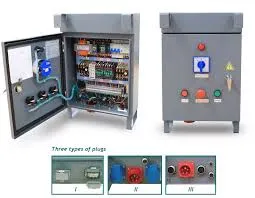How to Use Self-Amalgamating Repair Tape A Comprehensive Guide
Self-amalgamating repair tape, also known as self-fusing or self-bonding tape, is a versatile and practical solution for a variety of repair needs. Unlike traditional adhesive tapes, this type of tape bonds to itself without the need for glue, making it an ideal choice for electrical, plumbing, and other repairs. Here is a step-by-step guide on how to use self-amalgamating repair tape effectively.
1. Gather Your Materials
Before starting your project, assemble the necessary materials self-amalgamating repair tape, scissors or a knife, and any items you may need for the repair (e.g., tools for electrical work or plumbing fixtures). Ensure the surface where the tape will be applied is clean and dry for optimal adhesion.
2. Prepare the Surface
Proper preparation is crucial for a successful repair. Clean the area where the tape will be applied to remove any dirt, grease, or moisture. Use a cloth or paper towel to wipe the surface, ensuring it is smooth and rough spots are addressed. If you are working with electrical components, turn off the power supply to avoid any hazards.
3. Cut the Tape
Measure the length of tape you’ll need for your repair and cut a piece accordingly. It’s advisable to cut the tape longer than the area needing repair to provide ample coverage. Self-amalgamating tape will stretch, so consider the amount you might have to overlap or wrap around edges.
4. Start Wrapping
how to use self amalgamating repair tape

Begin by placing the tape at one end of the repair area. Make sure to start at the edge to form a strong base. As you wrap, stretch the tape slightly, ensuring that it overlaps each preceding layer by about half its width. This overlap is essential for a strong bond. Continue to wrap until you reach the other end of the repair area.
5. Smooth the Tape
Once wrapped, take a moment to smooth down the tape gently with your fingers. This helps ensure that it conforms to the shape of the surface and enhances the bond between layers. Pay extra attention to the ends, as these areas are prone to peeling if not secured correctly.
6. Allow to Set
Self-amalgamating tape will begin to fuse immediately, but it’s best to give the repair some time before subjecting it to stress or pressure. A few hours is sufficient for a solid bond to develop, though the exact time can vary based on environmental conditions.
7. Test the Repair
After allowing the tape to set, test the repair by carefully applying pressure or turning on electrical devices, if applicable. Ensure that the tape has effectively sealed the area.
In conclusion, self-amalgamating repair tape is an excellent choice for quick and effective repairs. With proper preparation and application, you can use this tape to fix electrical wires, plumbing leaks, and other household issues with confidence. Remember to follow these steps to achieve the best results, and enjoy the simplicity and effectiveness of this remarkable repair solution!
-
XIANGFAN Rubber Tape-Ultimate Solutions for All Your Insulation NeedsNewsJun.24,2025
-
XIANGFAN Rubber Tape-Protection for Industrial and Residential ApplicationsNewsJun.24,2025
-
XIANGFAN Rubber Tape: Superior Safety and Sealing for Demanding EnvironmentsNewsJun.24,2025
-
XIANGFAN Rubber Tape: Reliable Solutions for Every Electrical ChallengeNewsJun.24,2025
-
XIANGFAN Electrical & Industrial Tape: Powering Reliability Across IndustriesNewsJun.24,2025
-
XIANGFAN Electrical & Industrial Tape: Excellence in Every ApplicationNewsJun.24,2025
